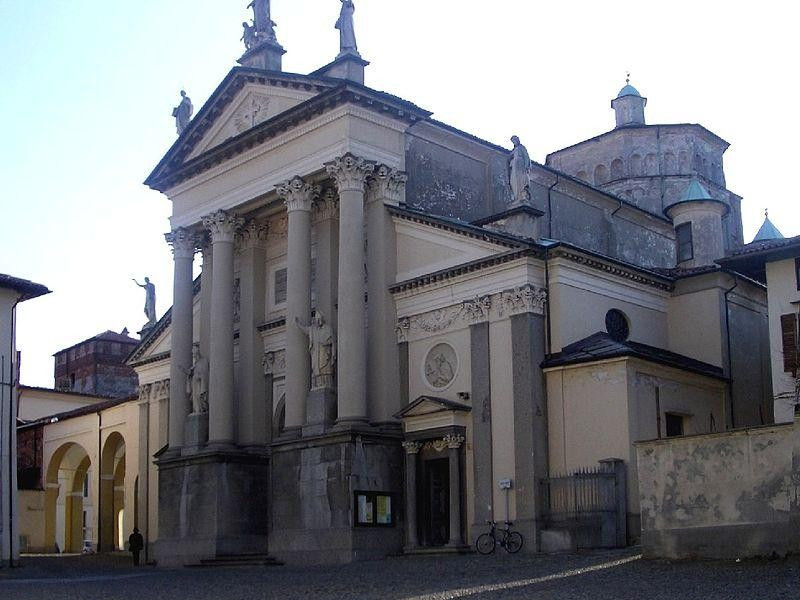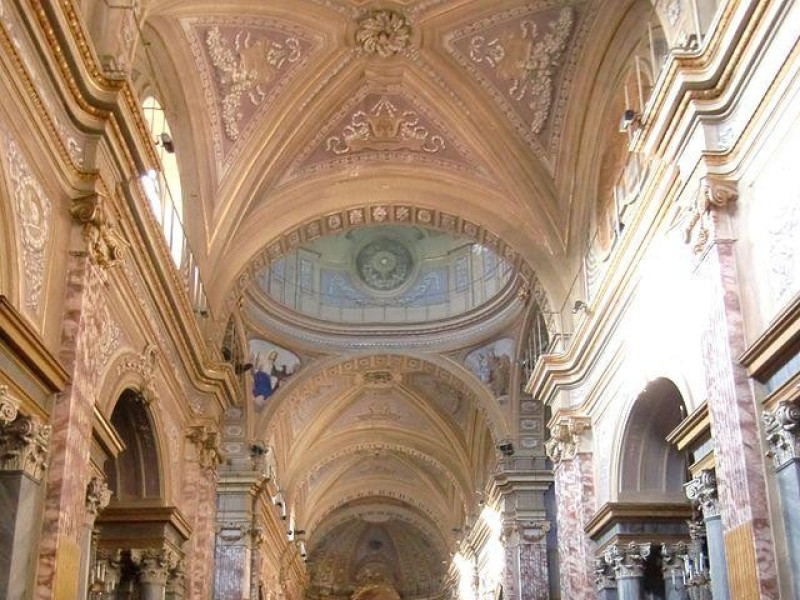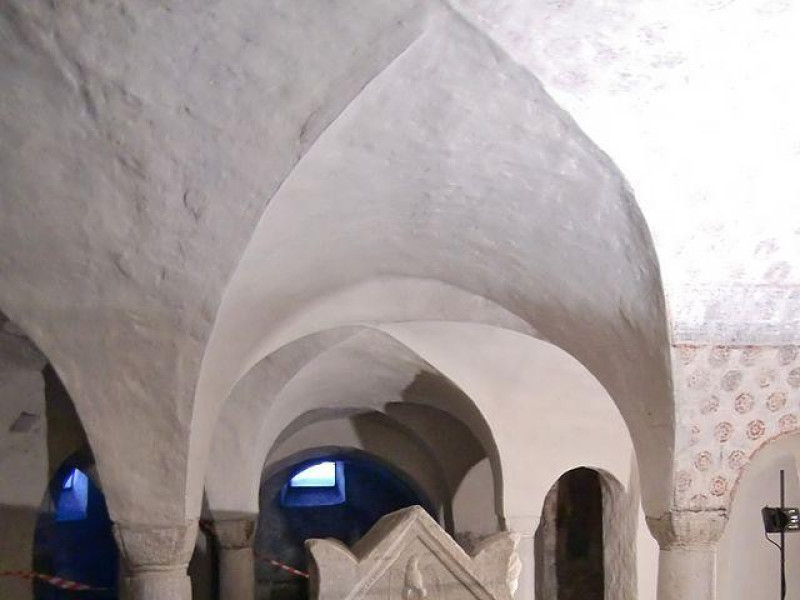Duomo di Santa Maria Assunta
Ivrea Cathedral, dedicated to St. Mary Assumption, stands on a hill, in the old part of the city, near the Castle. Its long history is evidenced by the presence of remains of Roman buildings reused in the construction and found during the excavations for the new nineteenth-century facade: it's believed, in fact, that the Duomo arises on the ruins of a Roman temple from the first century BC, transformed into a church (basilica plant with three naves and two opposing apses) between the late fourth and early fifth century, when it was established the diocese of Ivrea. Since that time, the Cathedral was enlarged and embellished in Romanesque style with an apse, two bell towers (marked by frames, slots, mullioned windows) and the ambulatory behind the choir. At that time also dates the oldest part of the crypt, which housed a Roman sarcophagus dedicated to Caio Atecio Valerio, then reused as a funeral urn for the relics of St. Besso. During the reconstruction, took place in the twelfth century, the Dome changed profoundly, adopting a plant similar to today: the presbytery was moved west of the nave and the crypt was enlarged. In 1464 were realized the sacristy capitulate, then rebuilt in 1846. In 1516 it was made a new facade with a porch in Bramante style, later replaced by the Neoclassical facade of Gaetano Bertolotti: marked by four large marble columns that support a triangular pediment, with statues of Giosuè Argenti. Major changes occurred in the eighteenth century: it was built the Chapel of the Blessed Sacrament; the vaults of the aisles were replaced by rectangular vaults, and were built stucco. Inside the crypt are kept several frescoes, the oldest, dating back to the thirteenth century, depicting a "Madonna and Child"; as well as in the ambulatory. Today it can admire all the Late Baroque interior decorations: the arches of the nave supported by pairs of columns and pilasters with Corinthian capitals; stucco and decorations; marble altar and choir stalls painted by Carlo Cogrossi. Of great value paintings and altarpieces.




